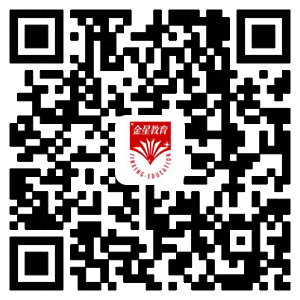出门在外,人生地不熟,要想去一个自己不熟悉的地方,最稳妥的办法就是嘴巴甜一点,向人问路(asking the way)。
在向人问路之前,一般应先说句 Excuse me, 这样一方面可以引起对方的注意,另一方面也显得比较有礼貌。注意这样用的 Excuse me. 不一定要直译为“对不起”,在这种情况下可译为“劳驾”、“请问”等。在具体问路时,要注意使用一些较为客气的句式或表达,如:Could you...? / Would you mind... ? / I wonder if... / Would you please... ? 等。请看有关实例:
Excuse me, can you tell me where the railway station is? 对不起,请问火车站在哪儿?
Excuse me, but can you tell me the way to the train station? 劳驾,请问去火车站怎么走?
Excuse me, could you tell me which is the way to the nearest hospital? 请问去最近的医院怎么走?
Excuse me, would you please show me the way to the post office? 请告诉我去邮局怎么走好吗?
Excuse me, would you mind telling me the way to the police station? 对不起,请告诉我去警察局怎么走好吗?
Excuse me, could you give me some directions? 请你给我指指路好吗?
Excuse me, can you direct me to the post office? 请问到邮局怎么走?
Excuse me, I wonder if you could do me a favour. I’m looking for the police station? 对不起,不知能否帮我,我在找警察局。
若对方为你引路时你有些话没听清,你可用 I beg your pardon? (对不起,我没听清) 或 Would you please say it again? I’m afraid I didn’t quite catch you. (请再说一遍好吗?我恐怕没有完全听清)等这类的话作出说明,请对方再说一遍。问完路之后,应向指路人表示感谢。
在指路时,我们经常会用到“向左(右)拐”这样的说法,其英语表达是: turn left (right) 或 turn to the left(right),注意:前一种说法中没有介词 to 也没有冠词 the, 说明该说法中的 left / right 是副词;而后一种说法既用了介词 to 又用了冠词 the, 则说明 left / right 是名词。注意不要将这两种表达混用。另外,英语中表示“在左(右)边”,可用介词 on / at。如:Turn left and walk on, and soon you’ll see a tall building on [at] the left. (向左拐,然后继续走,不久你就会看到左边有一座高楼)。顺便说一句,按照我国的交通规则是“行人(车)靠右”,而在英国你会看到这样的交通标牌 Keep to the left(靠左边走)。
在指路时,我们经常用到 block 这个词。该词在英国英语和美国英语中的含义不尽相同。在英国,它指的是“一排大建筑”或“连在一起的一片建筑物(如商店、办公室、公寓等)”;而在美国,它指的是“由四条马路围成的方形楼房区(即: 街区)”或指“两条平行街道之间的距离(即: 街段)”。因此在没有特定上下文的情况下 It’s two blocks from here. 这一句话作以下两种理解均可:
1)过两个街区就到了。
2)过两条马路就到了。
除 block 这个词外,指路时常用到的另一个词 avenue, 在英国英语和美国英语中含义也不同:在英国它指“小路” (指通往乡村住宅的、通常两旁栽有树的小路);而在美国它却指:大路(指城市中的宽敞的大路或马路)。值得一提的是:在美国的一些大城市(比如纽约) avenue (大路)和street (大街) 纵横交错,别具一格。南北走向的称为 avenue, 而东西走向的就就称为 street。
有时在问路时,可能恰巧碰上一个跟你一样不熟悉路的方向的人。这时他可能会这样回答:
I’m sorry, but I’m a stranger here myself. 很抱歉,我自己对这里也不熟。
I’m sorry, I don’t know. I’m new around here. 对不起,我不知道,我对这里很生疏。
I’m sorry, I’m not sure. You’d better ask someone else. 对不起,我没有把握。你最好问问别人。
即使是这样,你也应对他说声 Thank you, 不过此时多半要在其后加上 all the same, just the same 之类的词。其意是说“不管怎么说,还是要感谢你”。
有时人们在给对方指路之后,还往往会加上一些句子,以表示他的引路信息介绍完毕。如:You can’t miss it (你不会找不到的),You are sure to get there(你一定会到达那儿的),You can’t go wrong (你不会走错的)。
“指路”一些常用表达:
Go down this street, and turn to the left at the first crossing. 沿着这条街走,在第一个十字路口向左拐。
Go straight on, then turn right at the second crossing. 一直走,在第二个十字路口向右拐。
Go down the road and you’ll come to a bus stop. 沿着这条路走,你会走到一个公共汽车站。
Go straight ahead about 300 meters. 往前一直走 300米。
Go straight ahead until you come to a tall house, then turn left. 一直往前走,一直走到一座高房子,然后向左拐。
Go this way about 5 minutes. When you come to a lane, turn right. 沿着这条路大约走5分钟。当你走到一条小巷时,然后向右拐。
Keep going until you see a big white building on your left. 继续往前走,一直走到左边有座白色建筑。
Keep straight on for two blocks. 一直往前走,走过两条马路。
Walk until you get to the second crossing and then turn right. 一直走到第二个十字路口,然后向右拐。
Walk one block east. 朝东走过一个街区。
Take the first turning on [to] the left. 在第一个拐弯处向左拐。
Just follow this street two blocks. 沿着这条街走过两个街区就到。
Cross the street and turn left. 过了这条街,然后向左拐。
It’s over there. 就在那边。
It’s just around the corner. 就在拐角处。
It’s just across the street. 就在街那边。
It’s opposite the post office. 在邮局对面。
It’s next to the hospital. 就在医院隔壁。
It’s near the train station. 就在火车站附近。
It’s on the third floor. 在三楼。
It’s not far from here. 离这儿不远。
It’s about 200 metres from here. 离这儿大约300米。
It’s about five minutes’ walk. 走路五分钟就到。
It’s about half an hour’s ride. 乘车大约半小时。
It’s only two blocks. 只过两条马路就到。
It’s at the end of the street. 在这条街的尽头。
Take the No 5 bus here, and get off at the next stop. 在这里乘五路车,在下一站下车。
